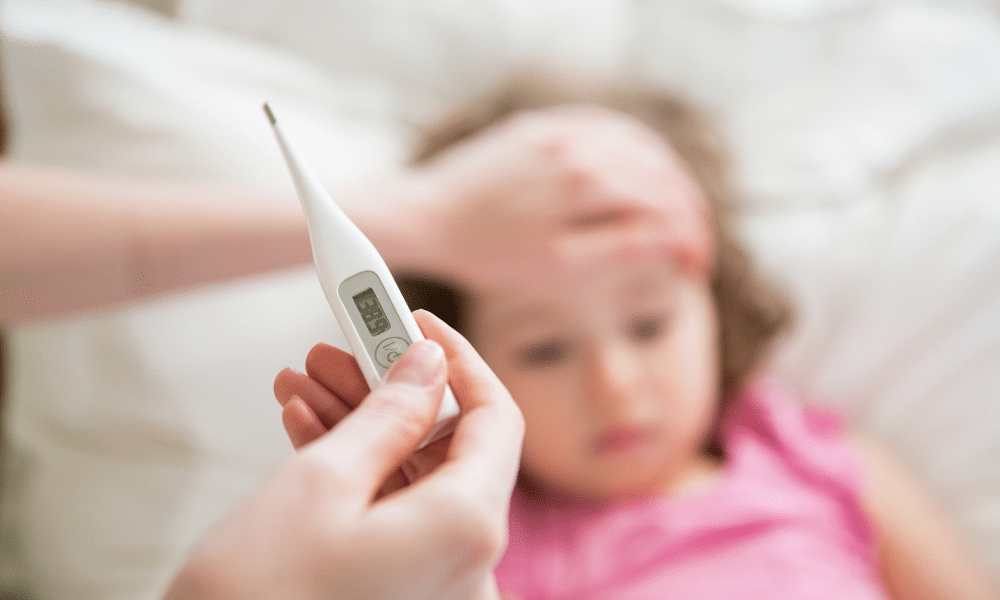How To Look After Your Sick Child At Home Basic Guide
You don’t need any special skills or medical knowledge to look after your sick child. It helps if you relax the rules and keep whatever anxiety you may have to yourself.
IN BED OR NOT?
When your child feels quite uncomfortable at the beginning of an illness, he will probably want to stay in bed, and he may sleep a lot. As he starts to feel better, he will still need bed rest, but he will want to be around you, and he may want intervals of playing. The best way to accommodate this is to make up a bed on a sofa or cot in a room near where you are working so that he can lie down when he wants to. Don’t insist that your child goes to bed just because he is sick. Children with a fever, for instance, don’t recover faster if they stay in bed. When your child is tired, however, it is time to put him to bed. But don’t just leave him alone. Ensure that you visit him regularly (every half an hour), find the time to stay and play a game, or read a book.
GIVING DRINKS
Your child must drink a lot when he’s sick – when he has a fever, diarrhoea, or is vomiting-because, he will be dehydrated and need to replace lost fluids. The recommended fluid intake for a child with a fever is 1 ½ – 21/2 fluid ounces per pound (100-150 millilitres per kilogram) of body weight per day, which is the equivalent of 2 pints (liter) per day for a child who weighs 20 pounds (9 kilograms).
Please encourage your child to drink by leaving his favourite drink at his bedside (preferably not sugary, carbonated beverages such as cola), by putting drinks in appealing glasses, and by giving him straws that bend to drink with.
KEEPING YOUR CHILD OCCUPIED
Illness is an occasion when you can completely indulge your child. When he is not resting, spend time playing games and talking to him. Relax all the rules and let him play whatever games he wants to, even if previously you have not allowed them in bed. If your child wants to do something messy like painting, just spread an old sheet or a sheet of polyethylene over the bed. If you can, move a television into his room temporarily – this will keep him entertained and make him feel special as well.
Let him do some painting, read aloud to him, get out some of his old toys and play with them together, buy him small presents to unwrap, sing songs or make up a story together, ask him to draw a picture of what he is going to do when he feels better, and, unless he has an infectious illness, let some friends visit him for a brief period during the day. As your child gets better, let him play outside, but if he has a fever, discourage him from running around too much.
VOMITING
Your child will probably find vomiting a distressing experience, and you should try to make him as comfortable as possible. Get him to sit up in bed and make sure there is a bowl or a bucket within easy reach so that he doesn’t have to run to the toilet. When he’s throwing up, hold his head and comfort him; with girls, tie back long hair. Afterward, help your child clean his teeth, or give him a mint to suck to taste away.
When your child hasn’t vomited for a few hours, and he’s feeling hungry, offer him bland foods, like mashed potato, but don’t encourage him to eat if he doesn’t want to. More important than eating is maintaining a constant level of fluids. Provide lots of water. (As you may know, infants are encouraged to drink rehydration solution, available from a doctor or pharmacist, to replace lost salts and minerals.) Avoid drinks such as milk, and give him plenty of fruit juice diluted with water.
TREATING A HIGH TEMPERATURE
Call your doctor if the fever lasts more than 24 hours or accompany any accompanying symptoms like vomiting or a rash. (Temperatures over 100.4°F (38°C) should be taken seriously in all children.)
Cool your child down by taking his clothes off and getting him to lie on the bed. Sponge him all over with tepid water and keep taking his temperature every minute until it has stabilized at 100.4°F (38°C). Never use cold water to sponge him since this causes the blood vessels to constrict and increase temperature. Cover him with a light cotton bedsheet and take his temperature every five minutes to make sure that it doesn’t go up again. Changing the sheets on your child’s bed regularly will help to keep him comfortable. It’s still essential for your child to drink lots of fluids since he will be perspiring a lot.



